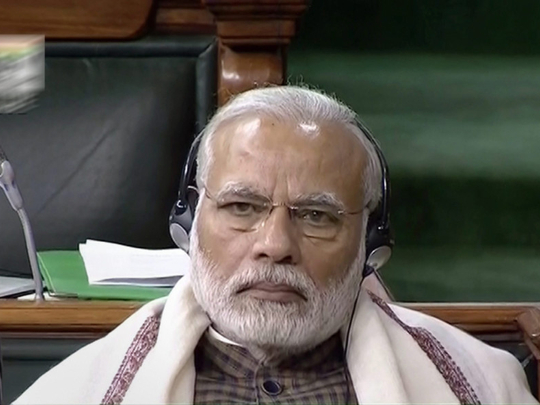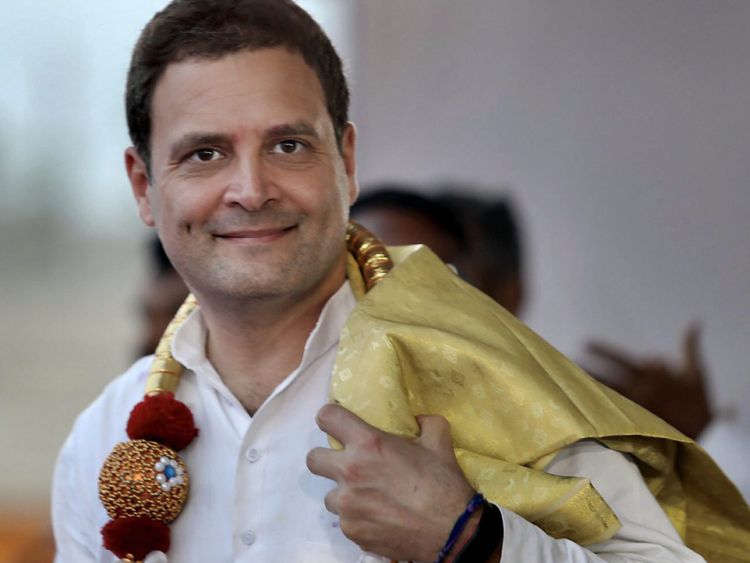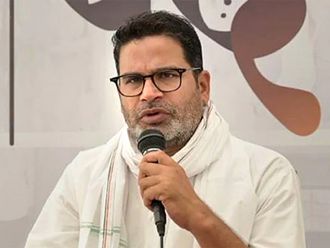
For the supporters of India’s ruling party, the growing belief that Bharatiya Janata Party (BJP) is no longer as favourably placed as before must be both bewildering and disheartening.
They must be wondering what could have gone wrong when the BJP was looking forward to not only a comfortable victory in 2019, but was also planning to celebrate the 75th year of India’s independence in 2022.
The talk of a “New India” under the BJP’s near-permanent control was in the air with both Nitish Kumar and Omar Abdullah from two opposite sides of the political spectrum saying that Prime Minister Narendra Modi faced no challenge.
Yet, the scene has changed. What is more, this has happened over a rather short period of time. The BJP’s electoral setbacks are cited as one of the reasons: First, the Chitrakoot assembly byelection in Madhya Pradesh last November, then the near-defeat it faced in the Gujarat assembly polls in the following month and finally the huge margins by which it recently lost three byelections in Rajasthan.
Before these contests, the successes of the Congress’ student wing in the Delhi University and of a leftist union in the Jawaharlal Nehru University students’ union elections over the Akhil Bharatiya Vidyarthi Parishad (ABVP), the saffron brotherhood’s student wing, were significant pointers to the emerging trends.
The new scenario has now led to speculation about a fall in the BJP’s Lok Sabha seats to 200/220 from the present 282 in a House of 545. Since these figures have been mentioned by a saffron scribe, it is obvious that assessments on these lines are currently on in the BJP. Another journalist has identified the absence of effective speakers other than Modi as one of the factors behind the BJP’s slide in popularity.
Perhaps one of the first to say openly that the Modi magic was fading was a Shiv Sena spokesperson, who also noted the change in Rahul Gandhi’s “body language” and his transformation into a credible leader. Not long after, the Sena decided not to align with the BJP in 2019.
The BJP’s old ally is not the only party to start thinking of greener pastures. The Telugu Desam Party, too, has expressed its displeasure over the “neglect” of Andhra Pradesh in the federal budget. To forestall a rupture, the BJP has offered the Shiv Sena 144 seats in Maharashtra in an assembly of 288 seats, but the generous gesture is more indicative of the BJP’s nervousness than of magnanimity.
So, what went wrong for a party that was riding high during the first three years of its tenure?
First and foremost reason is its failure to usher in the promised “achhe din” or better days because of a sluggish economy. The scene might have been better but for the twin blows of demonetisation, which dealt a blow to small businesses, and the shambolic rolling out of the Goods and Services Tax (GST), which also unsettled the traders and businessmen.
The second reason is the widespread rural distress that eroded the BJP’s influence in Gujarat. As a party essentially of urban lower-middle class areas, the BJP’s connection with the countryside has never been very strong. In its Jan Sangh days, the party once even forgot to adopt a resolution on agriculture till the lapse was noticed at the last minute.
Modi is now said to have sought the advice of farming experts to reach out to the cultivators. But the move is unlikely to pay immediate political dividends.
To compound the BJP’s problems, the Bharatiya Mazdoor Sangh (BMS), the Sangh Parivar’s labour wing, has raised the red flag over the “disappointing” federal budget.
Another explanation for the BJP’s woes is undoubtedly the inability to control the saffron goons, who have been running amok to impose their diktats on diet, inter-faith romance and film scripts, among other things.
The rampages of the cow vigilantes have hit the meat and leather industries and resulted in ageing cows being let loose by their owners to roam the countryside and city streets to forage on their own. Hence the proposal to impose a fine on the “guilty” owners.
The result is the prevalence of an atmosphere of intolerance of the kind that has made a section of the intelligentsia return the awards that it had won, protesting the deteriorating state of affairs in the country.
Perhaps the BJP’s only solace at the moment is that its opponents haven’t been able to get their act together. Moreover, the fissures in their ranks are palpable with a rift in the Communist Party of India-Marxist (CPI-M) over whether to align with the Congress in an anti-BJP front, and the Bahujan Samaj Party (BSP) teaming up with the Janata Dal (Secular) in Karnataka on the eve of the assembly elections.
There are also said to be reservations among the senior opposition leaders about accepting Rahul Gandhi as the leader of an alliance.
Karnataka will be the next big electoral battle for the BJP. If it can dislodge the ruling Congress in the state, it will be able to brush aside much of the party’s setbacks in Gujarat and Rajasthan. Otherwise, the road to 2019 will seem steeper.
— IANS
Amulya Ganguli is a political analyst.











